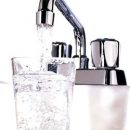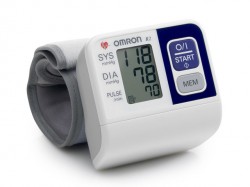Dear Miracle readers, you ever come across the need to cover your teeth with crowns? I think that this problem concerns today many people who have received a negative experience associated with prematurely removed teeth. Many of you are probably not a very aesthetic look of teeth from birth or acquired, striking significant defects on the surface of the tooth. All listed problems can be eliminated by putting aesthetic crowns. The choice of suitable crowns is carried out individually by the doctor's orthoped dentist during consultation, however, you need to own information on the characteristics of widely used crowns, as well as about their positive and negative properties. This information will relieve you from unnecessary issues at the reception, reduce the fear of unknown, and also protects from dental dentist.
What materials are the basis for crowns?
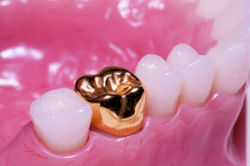
Dental techniques on special models that are accurate copies of dental rows manufactures crowns. As a basis for manufacturing are often used: metals, porcelain, metal alloys, composite or acrylic polymers, as well as data combinations of materials.
Metal stamped crowns. This type of crown is made of stainless alloys, gold or plastics. Stainless steel grade 1x18n9t has long been used to make stamped crowns, as well as their modifications. It is from this alloy at the factory a stamping of the sleeves representing the cylindrical caps.
Gold stamped crowns are made of sample gold - 900. This sample reflects the content of gold in the alloy - 90%. For cutting edges of the tooth, or 750 samples are used for the chewing surface, since the alloy with a reduced gold content is less mild and is not subjected to deformations when biting or chewing.
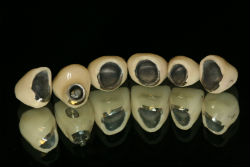
Metal-ceramic crowns. This is one of the most popular currently structures representing a metal crown with ceramic facing. The crown is manufactured in a dental laboratory from various alloys. For it, KHS and NHS are used - these are alloys of non-dense metals representing cobalt and chromium compounds, as well as nickel and chromium. For metal-ceramics, gold-palladium alloys can use. The use of noble metals gives certain advantages to the crowns made.
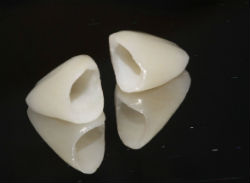
Domestic ceramics. One name speaks for itself. In these crowns, indeed, they were without a metal frame, and only the ceramics were applied.
Zirconium oxide-based ceramics - one of the most sought-after crowns «without metal».
This is due to the fact that this material forms a number of positive properties of crowns.
Thus, we listed popular crowns, which are used by orthopedic dentists. Currently. This, of course, is not a complete list, but for the formation of a general idea of modern materials for the manufacture of crowns, which are especially in demand, is quite enough.
Indications for use
Stamped crowns. They are applied in cases where the defect in the tooth cannot be restored either by the tab or sealing. You can put a crown in cases, if there is no confidence in the strength of the tooth, even after a detailed treatment. The crown can also be a supporting element of orthopedic design. It is possible to use stamped crowns in the pathological erasability of teeth, as well as with various severe forms of noncariosis lesions, for example, fluorosis or hypoplasia. These are the main indications for the use of crowns of this type.
Metal-ceramic crowns. Such crowns can be used in the shape of the shape and color of the crown of teeth, resulting from such pathological processes as: caries, wedge-shaped defects, injury, fluorosis, hereditary anomalies of the shape and position of teeth and T. D. With an increased washeard, as well as in the phenomena of allergy on plastics - this is the most optimal choice for prosthetics.
Domestic ceramics manufactured for various purposes. It is used to restore strongly destroyed teeth, making crowns on the pins, as well as artificial teeth on Implants.
Advantages of each type of crown
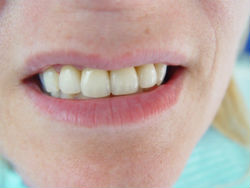
For Stamped crowns, manufactured from traditional alloys of the ignorable metals, the main advantage is low price. It is formed from certain disadvantages of this type of crown. However, the strength characteristics, that is, the ability to experience significant loads over the years of operation gives stamped crowns visible advantages. Under the stamped crowns, the teeth are prepared («Crack») minimal, in contrast to its aesthetic competitors. After processing the teeth almost always have the ability to save the pulp, that is «nerve», safe and sound. To prepare under modern types of crowns associated with significant treatment of tooth surfaces, up to formation «Culti», In most cases, leave the tooth «alive» does not seem possible. According to many practicing dentists, stamped crowns, manufactured and fixed according to technology, more durable and operate longer compared to more aesthetic competitors. In addition, they are light, and after a few hours after fixing, many patients get used to them as native. Such crowns, despite some disadvantages, which will be said later, even the dentists still put.
For a material, it is preferable to use, of course, gold, which has unique properties, but at present, for certain reasons, not so many institutions involved in stamped gold crowns.
For molars that stand far behind, preference is given to stamped crowns of non-poor metals, while for front teeth, still need aesthetic crowns.
Metal-ceramic crowns have a number of advantages compared to stamped crowns. The most important advantage is high aesthetics. Facing a porcelain, placed on the surface of the metal crown, is precisely selected in color to nearby teeth. Porcelain reflects the light by creating the effect of natural enamel.
Also for metal ceramics is characterized by durability. If the stamped crowns can be operated sufficiently rigidly, boldly by eating hard foods, then for the durability of metal-ceramics, it is necessary to observe power hygiene, since it is possible to provoke a cracking of ceramics with a single large load.
Metal ceramics, in contrast to stamped crowns, can be put in the most difficult cases.
This type of crown is one of the most popular among the population, especially since every year there is a tendency to reduce the value of one unit due to great competition among the dental clinics.
Domestic ceramics It has improved cosmetic properties, as the degree of refraction of light from the crown and enamel coincides. Unlike metal ceramics on the border of the crown and gums there will not be a dark strip of metal, which gives advantages in aesthetics. The risk of allergic reactions in non-velocular ceramics is the most minimal, since there is no frame from alloys of different metals, which is most often allergic.
Disadvantages of crowns
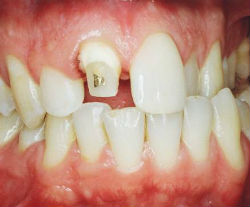
Despite the advantages, there are always certain deficiencies that should always be aware of.
For Stamped crowns Characteristically lack of aesthetics to a greater or lesser extent, depending on the material used. You, of course, have an idea of the so-called «Golden» crowns. It is this kind of «Stamping» scares many patients even if we are talking about the use of gold for their manufacture. Some options with plastics also do not give the right cosmetic effect. Allergic reactions on metal alloys are quite common, there are effects of electroplating currents in the mouth when using heterogeneous metals.
Metal-ceramic crowns - these are massive crowns that require mainly removal «nerve», That is depugntion. Technology often does not allow to save the vascular-nervous beam, as it goes «overheat» tooth, and live fabric in the teeth simply dies. After the preparation of the tooth under the crown, it remains actually only «stump».
On the possibility of the appearance of a dark metal strip near the edge gum I have already mentioned. It's a small minus aesthetics. With non-accurate feeding of food, especially solid, the occurrence of cracks in porcelain cladding, leading to discover.
Own teeth, located on the opposite side, can be wary from ceramic crowns when contacting them. Most of the types of ceramics have a hardness exceeding the hardness of native enamel.
Domestic ceramics By durability is inferior to the metal. For prosthetics of chewing teeth, dentists prefer and metal ceramics prefer, since chips are possible with the slightest serious load. The cost of such crowns significantly exceeds aesthetic metal ceramics.
Now you, dear readers, our site, have an idea of popular current crowns, ranging from ordinary «Stamping» and ending with non-remote ceramics. Knowing the pros and cons of each species, you can competently approach our own prosthetics or to prosthetics of their relatives and loved ones. «Who owns information, he owns the situation» - Here is my motto in life. I hope that this information will allow you not to make a mistake with the optimal crowns for you. Approaching the knowledge of prosthetics with crowns, you competently dispose of money, and also do not harm your health. All the best!

